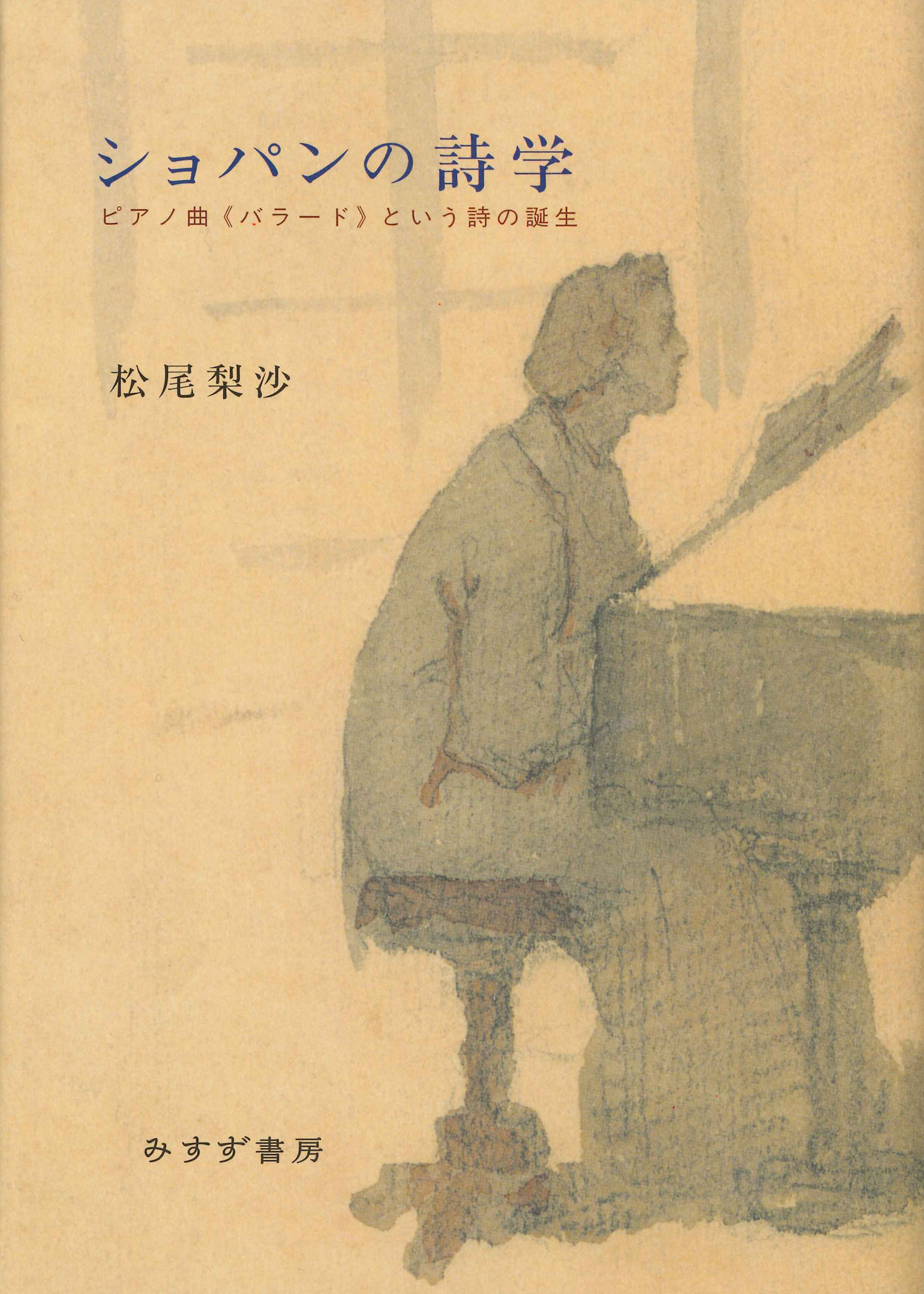
Title
Chopin no Shigaku (Chopin’s Poetics - From Literary Ballade to Piano Ballade)
Size
408 pages, A5 format
Language
Japanese
Released
February 08, 2019
ISBN
978-4-622-08759-5
Published by
Misuzu Shobo
Book Info
See Book Availability at Library
Japanese Page
This book clarifies the meaning of the ballade genre of music for solo piano created by Fryderyk Chopin (1810–1849), focusing on the relationship between his compositional technique and Polish literature (poetics in particular).
The origin of this research was an investigation into the style of letters written by Chopin. Almost all of his childhood letters are written in Polish and in fact the style often resonates musically, continually rhyming and beating out a certain rhythm. Could Chopin’s Polish style, with its nonsense and humor, have had a direct bearing on his musical inspirations and creations? His work includes songs (melodies and accompaniments for Polish lyrics) and pieces for solo piano given the poetic title of his Ballades (the term ballade originally referred to a literary genre of narrative poem, and Chopin was the first person in Western musical history to use this term as the title for pieces for solo piano).
Part 1, therefore, examines Chopin’s songs. Chopin was extremely close to some Polish poets (e.g., Witwicki, Zaleski, and Mickiewicz), and continued to write music set to their work throughout his life. This book carefully considers the structure of the poems, tendencies in the poets who wrote them, and their relationship to Chopin, with reference to Chopin’s own Polish style (as mentioned above). Chopin’s songs are analyzed on the basis of this consideration. As a result of this analysis, it became clear how Chopin composed his works with a recognition of the genius of the poets and the artistry and unique features of each poem.
In other words, Chopin was possessed of the ability to grasp Polish literary works structurally and theoretically, and to express that understanding in music. If one pays attention to this hitherto unrecognized aspect of Chopin, it becomes possible to point out more precisely the meaning of the title Ballade used for his famous piano pieces, the literary significance of which has never been clear. Part 2 analyzes all four of his Ballades (Op. 23, 28, 47, and 52) from this perspective. Numerous literary ballades that emerged in Poland during Chopin’s era are analyzed here, and their structural features are compared to those of Chopin’s four Ballades. As a result, it ultimately became clear that his Ballades can be established as a genre and, moreover, that they have a generally parallel structure with the ballades of Polish literature. This conclusion will be useful for any pianists who have struggled to interpret Chopin’s Ballades.
Chopin has already come to be called the “poet of the piano,” but this was only intended to mean that he was a composer of sentimental salon-style piano pieces. However, according to the conclusion of this book, he is not a “poet of the piano” in that sense. As the first study in the world addressing Chopin from an interdisciplinary perspective that combines poetics and musicology, this book highlights Chopin as the “poet” of the piano in a real sense, distinct from the previous meaning.
(Written by: MATSUO Risa / September 25, 2020)
Related Info
The 25th Japan Comparative Literature Association Award (Nov 18, 2020)
http://www.nihon-hikaku.org/activity/award.html
Encouragement award of The Japan Society for the Study of Slavic Languages and Literatures (June 12, 2020)
https://www.jsssll.org/2020/07/02/2018-2019年度日本スラヴ学研究会奨励賞選考結果についての報告/




 eBook
eBook